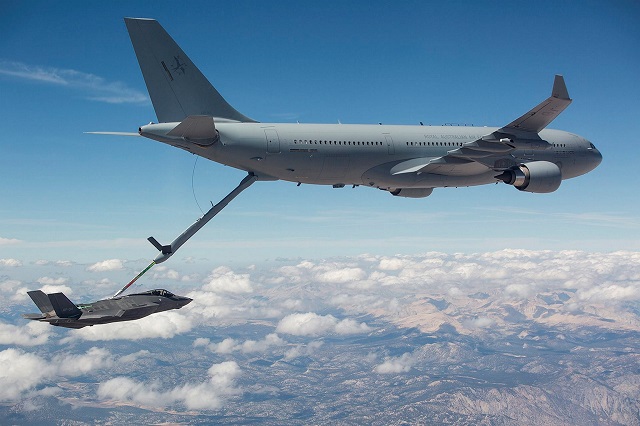At the start of this century, the then-EADS began exploring the potential for its A330 widebody to deliver air-to-air refuelling (AAR) services for military operators. In doing so the European company replicated its strategy for the airliner market, by going head to head for international sales with Boeing, which held a virtual monopoly in the tanker sector.
Airbus had previously modified a handful of A310s for the tanker role, adapting the widebody to carry under-wing hose-and-drogue refuelling pods. Flight Fleets Analyzer shows the air forces of Canada and Germany as still having two and four examples in use, respectively.
The convoluted future strategic tanker aircraft competition to replace the UK Royal Air Force's Lockheed TriStars and Vickers VC10s eventually led to success for the A330-200-based Voyager –although a 2004 selection of the AirTanker consortium did not lead to a contract award until four years later, and first delivery in September 2011. Three months earlier, the Royal Australian Air Force (RAAF) formally accepted its first locally designated KC-30A, under a five-unit acquisition.
Canberra's selection involved the integration of an Airbus-developed, fly-by-wire-controlled aerial refuelling boom system. After significant delays with development and service acceptance, the RAAF debuted the boom capability on deployed operations in November 2015.

Commonwealth of Australia
At one point it appeared as though Airbus had succeeded in its most audacious of sales pitches, when its partner Northrop Grumman was selected for the US Air Force's KC-X tanker deal in February 2008. After the decision was quashed following an appeal by Boeing, EADS North America led a second bid, before its rival's 767-based KC-46A was selected for the 179-aircraft requirement in February 2011. Boeing is due to deliver its first operational examples next year.
Flight Fleets Analyzer shows 24 A330 multi-role tanker/transports (MRTT) as being in current active service, with Australia (6), Saudi Arabia (6), the United Arab Emirates (3) and the UK (9). A further five Voyagers were modified for use by the RAF and can be called on if needed to support "surge" operations.
The A330 MRTT can carry 111t of fuel, up to 300 passengers and under-floor cargo, and Airbus says the global fleet has amassed more than 125,000 flying hours.
Airbus has a healthy production backlog, with orders from France, Singapore, South Korea and a group of NATO nations, which will field the type as a pooled capability via a European Defence Agency initiative. Germany, Luxembourg, the Netherlands and Norway have so far committed to seven aircraft, and ordered two of these, and the fleet could be expanded to 11 if further partners join the effort.
Qatar has previously selected the type for a two-aircraft need, but the status of its acquisition plan is unclear. India also selected the A330 MRTT for a six-strong tanker deal, but this procurement has been abandoned, with New Delhi to stage a fresh competition.
Future deliveries will be made in an enhanced configuration, which includes updated avionics equipment and aerodynamic improvements. The first such aircraft was flown in modified form in October 2016 and will be delivered to the Republic of Singapore air force. A lead example for France got airborne in September 2017 and will be delivered next year.
Source: FlightGlobal.com



















